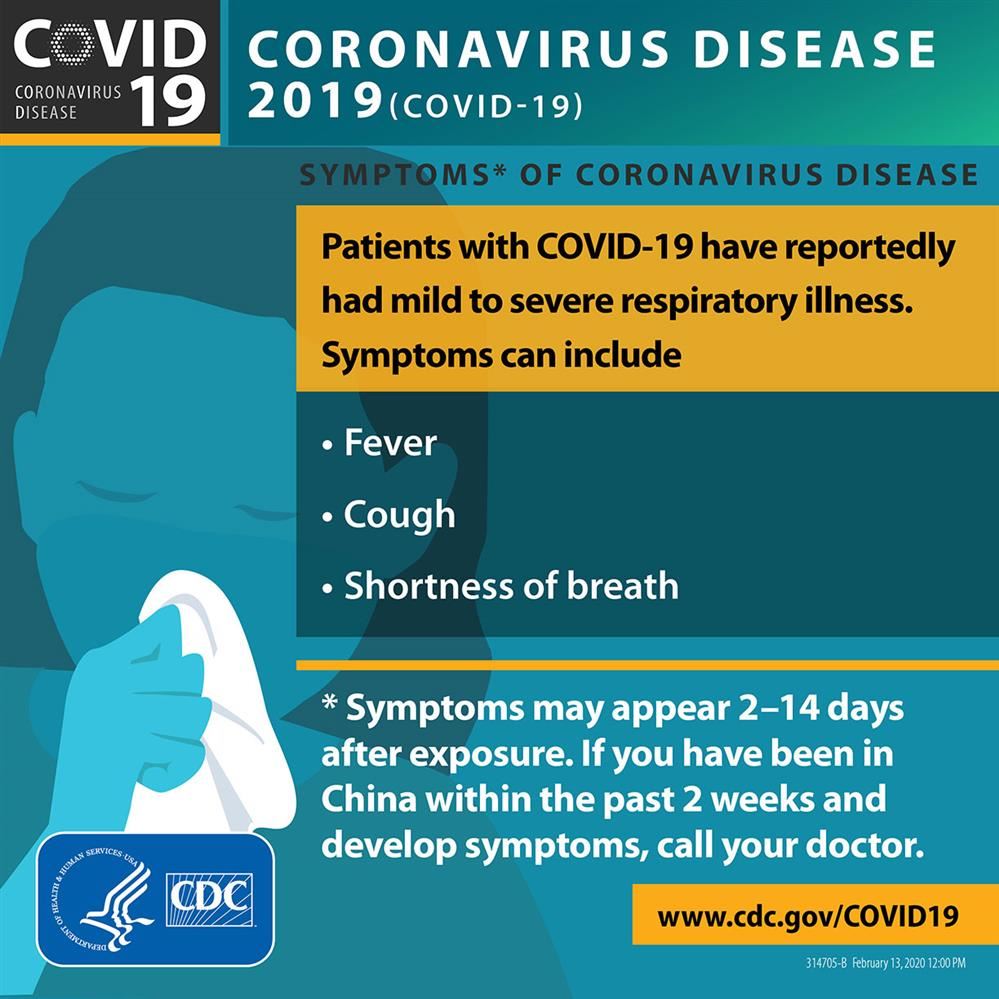Coronavirus (Covid-19)
Page Navigation
- Hmong College Prep Academy
- HCPA Covid Task Force
- What is Covid-19?
HCPA: Health Office: Coronavirus (COVID-19)
-
HCPA is closely monitoring the coronavirus 2019 (COVID-19) and working together with local health departments to ensure students have a safe and healthy environments. Health officials are currently taking steps to prevent the spread of COVID-19 into communities.
What is COVID-19?
Coronaviruses are a large family of viruses which may cause illness in animals or humans. In humans, several coronaviruses are known to cause respiratory infections ranging from the common cold to more severe diseases such as Middle East Respiratory Syndrome (MERS) and Severe Acute Respiratory Syndrome (SARS). The most recently discovered coronavirus causes coronavirus disease COVID-19.
On February 11, 2020 the World Health Organization announced an official name for the disease that is causing the 2019 novel coronavirus outbreak, first identified in Wuhan China.
There are many types of human coronaviruses including some that commonly cause mild upper-respiratory tract illnesses. COVID-19 is a new disease, caused by a novel (or new) coronavirus that has not previously been seen in humans. The name of this disease was selected following the World Health Organization (WHO) for naming of new human infectious diseases.
A novel coronavirus is a new coronavirus that has not been previously identified. The virus causing coronavirus disease 2019 (COVID-19), is not the same as the coronaviruses that commonly circulate among humans and cause mild illness, like the common cold.
How does COVID-19 spread?
The virus that causes COVID-19 is spread from person-to-person. Someone who is actively sick with COVID-19 can spread the illness to others. That is why CDC recommends that these patients be isolated either in the hospital or at home (depending on how sick they are) until they are better and no longer pose a risk of infecting others.
Current CDC guidance for when it is OK to release someone from isolation is made on a case by case basis and includes meeting all of the following requirements:
- The patient is free from fever without the use of fever-reducing medications.
- The patient is no longer showing symptoms, including cough.
- The patient has tested negative on at least two consecutive respiratory specimens collected at least 24 hours apart.
Someone who has been released from isolation is not considered to pose a risk of infection to others.
How can you protect yourself and prevent the spread of COVID-19?
The best way to prevent illness is to avoid being exposed to this virus. COVID-19 spread mainly from person-to-person through respiratory droplets produced when an infected person coughs or sneezes. It is also possible that a person can get COVID-19 by touching a surface or object that has the virus on it and then touching their own mouth, nose, or eyes. Centers for Disease Control and Prevention (CDC) recommends every day preventative measures to help prevent the spread of respiratory diseases:
- Avoid close contact with people who are sick (within about 6 feet)
- Avoid touching your eyes, nose, and mouth
- Stay home when you are sick
- Cover your cough and sneeze with your elbow not your hands
- Wash hands with soap and water for at least 20 seconds
- If soap and water not readily available, use an alcohol-based hand sanitizer with at least 60% alcohol
- Wear a face mask
- If you are sick: You SHOULD wear a face mask to prevent the spread of infection
- If you are NOT sick: You DO NOT need to wear a face mask unless you are caring for someone who is sick
- Clean and disinfect frequently touched objects and surfaces using regular household spray or wipes
What are the symptoms of COVID-19?
The most common symptoms of COVID-19 are fever, tiredness, and dry cough. Some patients may have aches and pains, nasal congestion, runny nose, sore throat or diarrhea. These symptoms are usually mild and begin gradually. Some people become infected but don’t develop any symptoms and don't feel unwell. Most people (about 80%) recover from the disease without needing special treatment. Around 1 out of every 6 people who gets COVID-19 becomes seriously ill and develops difficulty breathing.
Should I be tested for COVID-19?
People who do not have symptoms should not be tested for COVID-19.If you develop symptoms such as fever, cough, and/or difficulty breathing, and have been in close contact with a person known to have COVID-19 or have recently traveled from an area with ongoing spread of COVID-19, stay home and call your healthcare provider.
Where can people be tested?
Most clinics and hospitals across the state have the ability to collect samples (specimens) for lab testing. It is best to call your health care provider before going to the clinic or hospital to be tested.
At this time there are 77 confirmed cases of COVID-19 in Minnesota. We understand staff, parents, and students may have questions and concerns about the COVID-19, particularly if staff, students, parents, and family members have traveled recently to a country with an outbreak. The situation surrounding the outbreak is rapidly evolving. With that being said, information and recommendations will be updated as we learn more about COVID-19 as new information becomes available.
Additional Resources:
Centers for Disease Control and Prevention (CDC)
https://www.cdc.gov/coronavirus/2019-ncov/index.html
Coronavirus (COVID-19) Live Map Tracker (World-wide)
https://www.bing.com/covid?ref=msn
Minnesota Department of Health (MDH)
COVID-19 Hotlines:
Schools, Child Care, Business Questions: 651-297-1304 or 1-800-657-3504
Health Questions: 651-201-3920 or 1-800-657-3903
https://www.health.state.mn.us/index.html
World Health Organization
https://www.who.int/emergencies/diseases/novel-coronavirus-2019
University of Minnesota Medical School Program in Health Disparities Research (PHDR)
https://docs.google.com/document/d/1w5rNLRPqIMURzGAP0gGTwILrbvzsG242O_A5gN7kX20/mobilebasic
Covid-19 Translation in Hmong


